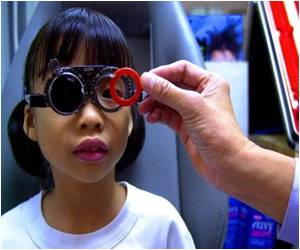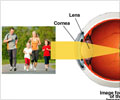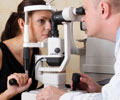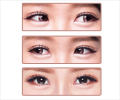Nine new genetic risk factors work together with education-related behavior as the most important environmental factor causing myopia.

‘Transmission of the neurotransmitter gamma-aminobutyric acid (GABA) in the eye plays a major role in the development of short-sightedness or myopia.
’





This international group of researchers includes scientists involved in the Gutenberg Health Study of the University Medical Center of Johannes Gutenberg University Mainz (JGU). The team has uncovered nine new genetic risk factors which work together with education-related behavior as the most important environmental factor causing myopia to generate the disorder. The results of the study "Genome-wide joint meta-analyses of genetic main effects and interaction with education level identify additional loci for refractive error: The CREAM Consortium" have recently been published in the scientific journal Nature Communications.
It is known from previous studies of twins and families that the risk of acquiring short-sightedness is determined to a large extent by heredity. However, the myopia-causing genes that had been previously identified do not alone sufficiently explain the extent to which the condition is inherited. In addition to the genetic causes of myopia there are also environmental factors, the most significant of which are education-related behavior patterns.
"We know from the Gutenberg Health Study conducted at Mainz that the number of years of education increases the risk of developing myopia," said Professor Norbert Pfeiffer, Director of the Department of Ophthalmology at the Mainz University Medical Center.
Meta-analysis of multi-national datasets
Advertisement
"In the field of genetic research, international cooperation is of particular importance. This is also borne out by this study, to which we were able to make a valuable contribution in the form of data from our Gutenberg Health Study," continued Professor Norbert Pfeiffer. "And in view of the fact that a survey undertaken by the European Eye Epidemiology Consortium with the help of the Gutenberg Health Study shows that about one third of the adult population of Europe is short-sighted, it is essential that we learn more about its causes in order to come up with possible approaches for future treatments."
Advertisement
Risk-associated gene involved in the development of short-sightedness
These newly discovered genetic variants are associated with proteins which perform important functions when it comes to the transmission of signals in the eye. One of these genes is of particular interest because it plays a major role in the transmission of the neurotransmitter gamma-aminobutyric acid (GABA) in the eye. Previous studies have shown that there is greater activation of the gene in question in eyes that are myopic. The results of current research substantiate this conclusion. The CREAM researchers interpret this as evidence that this newly discovered risk-related gene is actually involved in the development of short-sightedness.
This represents significant initial headway towards understanding how genetic causes interact with the level of education as an environmental factor to produce the heterogeneity of myopia. Further research will be needed to clarify the details of how the mechanisms actually work and interact with one another.
The spread of short-sightedness is a worldwide phenomenon. Particularly in South East Asia the incidence of myopia in school children has increased notably over the last decades. This is likely due to an improvement in educational attainment.
People who read a great deal also perform a lot of close-up work, usually in poor levels of daylight. The eye adjusts to these visual habits and the eyeball becomes more elongated than normal as a result. But if it becomes too elongated, the cornea and lens focus the image just in front of the retina instead of on it so that distant objects appear blurry. The individual in question is then short-sighted.
Source-Eurekalert














